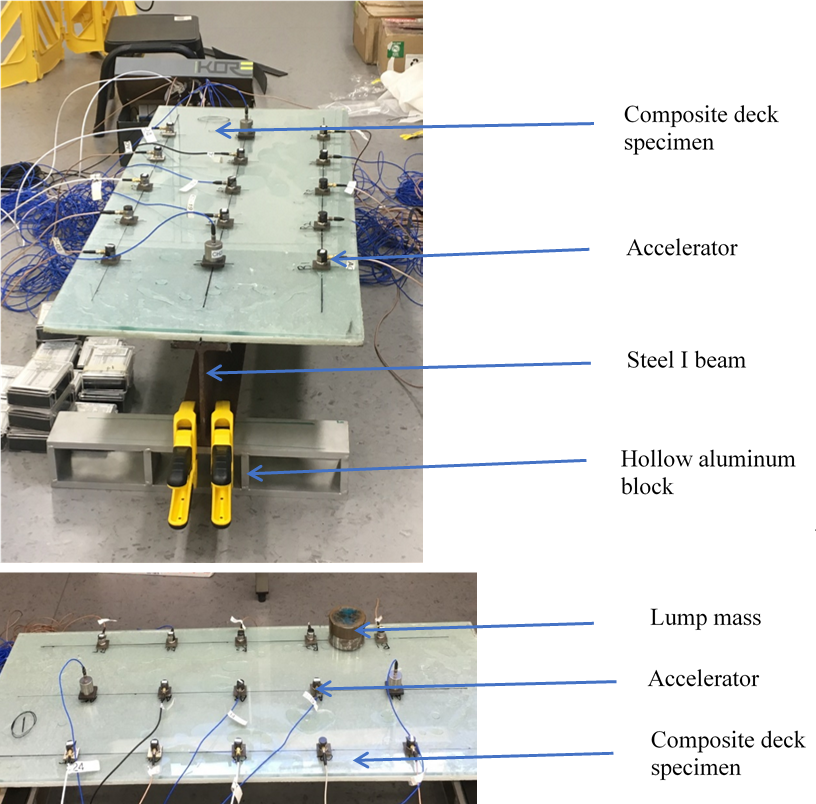The research project aimed to develop a combined experimental–numerical procedure to study the vibration characteristics of the innovative slab girder pedestrian bridge (developed in a previous project) and then use them to detect and locate damage in the bridge. Experimental free vibration tests on the bridge in its healthy state and under selected damage scenarios were conducted to determine the natural frequencies and the corresponding mode shapes. These free vibration responses were used to study the vibration characteristics of this bridge and then to use them to detect damage in the bridge using the modal flexibility method.
A Finite Element (FE) model of the undamaged slab-girder composite pedestrian bridge models was then developed using ABAQUS software and validated using the free vibration test results. Using the validated modelling techniques FE models of the bridge with single and multiple damages were developed. Free vibration responses obtained from the FE analysis for each damage case together with the modal flexibility change were used to detect the damage in the numerical models of the bridge under a range of damage scenarios. Results showed that the combined experimental-numerical procedure adopted in the present study was effective for single and multiple damage assessment in the innovative composite pedestrian bridge. The peaks of the modal flexibility change plots provided a good indication of damage severity in the bridge, which depend not only on the number of damages but also on the damaged member as well as the damage location. Results also showed that this innovative bridge has early vibration modes that are dominant in torsion, different to those in traditional slab-girder bridges, which have modes dominant in flexure. Despite this important variation, the modal flexibility method proved to be effective in detecting and locating damage in the bridge.
Funding / Grants
- Research Fellowship Grant of QUT
